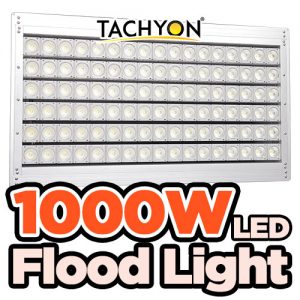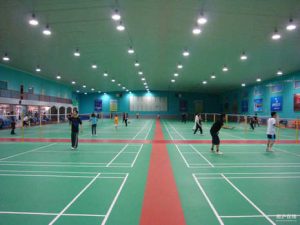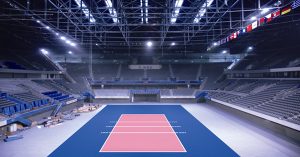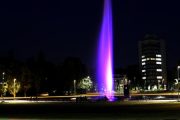There are many parameters of LED lamps. Due to the different nature of lighting, the focus of the indicators will be different. It is difficult to say that those indicators are absolutely important, and those indicators are definitely not important.
As general lighting, the most common is power, luminous flux, color temperature and so on. As a professional lighting: such as road lighting and gas car lighting, it is necessary to pay attention to the light distribution curve and color temperature. The production line lighting must pay attention to the color rendering index. The power factor should be paid attention to when installing high-power lamps in a large area. The following is a brief introduction to these indicators:
1. Power
Power is the most primitive and common parameter for all appliances. As a power indicator, it could only represent how much electricity the lamp can consume, but now it has almost become the only indicator other than the lamp type. When people talk about lamps and lanterns, they always mention “15w bulb”, “120W street light”, etc. Few people mention other indicators. This is mainly because the power parameter is easily understood and accepted by everyone, and in the same series of lamps, the power and the lighting effect are basically proportional. Therefore, power has risen to a comprehensive index in everyone’s mind, rather than simply indicating how much power is consumed.
2. Luminous flux
Luminous flux is the basic indicator of a light source, which indicates how much light energy the light source radiates. The original definition of luminous flux refers to: placing a standard candle in a two-meter-diameter circular space, the light passing through this sphere is one lumen per square meter, written as lm.
As a luminous flux index, there are generally two marking methods: one is to mark the absolute value. For example, if the luminous flux of a 120W street lamp is 12000 lm, it can be directly marked with 12000 lm. However, it does not reflect how much electricity is consumed to output these light energy, so many lamps use the form of lm/W to reflect the efficiency of electricity utilization.
This form of labeling is called the “light effect” indicator. The luminous efficiency of the street lamp in the above example can be expressed as 100 lm/W. This is a relative parameter, the larger the value, the higher the power utilization rate.
There is also an indicator called “lamp efficiency”, which refers to the utilization rate of the light source by the lamp. For example, if the luminous flux of an LED light source is 1000 lumens, install it in a street light and then do an overall test. The luminous flux is only 900, then the efficiency of the lamp is 90%. This indicator is not usually used much, and it is easy to compare with lm/W. Light efficiency indicators are confused.
Some manufacturers deliberately ignore the efficiency of the lamp, and directly mark the light effect of the light source as the whole light effect.
3. Color temperature and color rendering index
The meaning of color temperature in a more popular way refers to the color of an object at a high temperature. For example, the temperature after burning the iron red is the color temperature corresponding to this color. As the temperature rises, the color of iron will gradually turn yellow, whitish and bluish. The color with high temperature is called high color temperature, generally refers to above 5000K, and the reddish color below 3000K is called low color temperature. The temperature mentioned here is not our commonly used degree Celsius ℃, but Kelvin K. Its absolute value is as large as Celsius, but the overall coordinate is moved down by 273.15°C, which means that zero Celsius is equivalent to 273.15K Kelvin.
Kelvin is not below zero, and its zero degree is the limit of the low temperature in the universe.
Let’s talk about the color rendering index. It refers to the degree of color reproduction of the illuminated object when the surface of the object is illuminated by a certain light. The color temperature of noon sunlight is 5500~6000K. The color of objects seen under the sun is considered to be the natural color, so people define the color rendering index of sunlight as 100.
Many people think that as long as the color temperature of the light source is controlled at 5500~6000K, the color rendering index can reach 100. This is actually a misunderstanding. The International Institute of Illumination made a “chromaticity diagram” in 1931. The actual situation is that when the color temperature of the lamp bead is 5564K, its color rendering index may only be 75. This is because there is a problem with the composition of light.
It can be seen from the spectrum that the LED lamp beads have obvious blue peaks. In the chromaticity diagram, the position of the white area is different, which will cause the color rendering index to change. To put it simply, even though the light source is at the same color temperature, more or less light of a certain color will also affect the color rendering index.
There is no need to pursue an excessively high color rendering index in a general lighting environment. For example, car lights and street lights should focus on color temperature, while production workshops or painting rooms should focus more on color rendering index.
4. Light distribution curve
The light emitted by the light source is “free and diffuse”, and in most cases cannot meet people’s requirements for lighting effects. This requires finishing and adjusting these lights to make them work better. This kind of restriction and finishing of light is the so-called “light distribution” (light distribution will inevitably lead to loss of luminous flux).
For example, the flashlight concentrates the light to the front, and the old incandescent lamp adds a lampshade to let the light shine down, etc., which are the most common light distribution application examples. The above figure is the light distribution curve of the two lamps. The spotlight on the left is similar to a flashlight, the light is concentrated in a small angle. The street lamp on the right adjusts the light to both sides (commonly known as the flat bat-shaped light distribution curve) to enhance the light at a position slightly farther away from the lamp head in a straight line to avoid excessive light under the lamp. This is very important for special lighting places such as street lights and car lights.
5. Power factor
Power factor is an important index unique to AC appliances. Because of the presence of capacitive and inductive loads, a large amount of reactive current will be generated in the circuit. This is like an empty truck on the road. Although there is no cargo, the road takes up an inch. Even if the power company will not charge more electricity fees for this reason (rewards and penalties are still available), the consequences of increasing the wire diameter investment or the heating and voltage drop of the wire must be borne by itself. At present, the country does not have hard requirements for the power factor of low-power electrical appliances, but it should be paid attention to if it is used on a large scale in a local area.
In addition to the above indicators, there are indicators such as brightness and illuminance. However, it is related to the illumination distance and the reflective characteristics of the illuminated object, and it will only be used when designing or evaluating the lighting effect of a specific occasion, and it has no practical meaning as a lamp itself.








